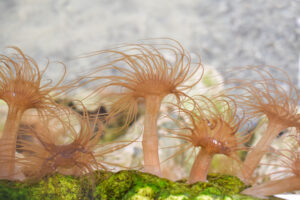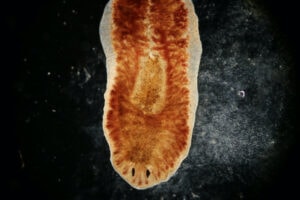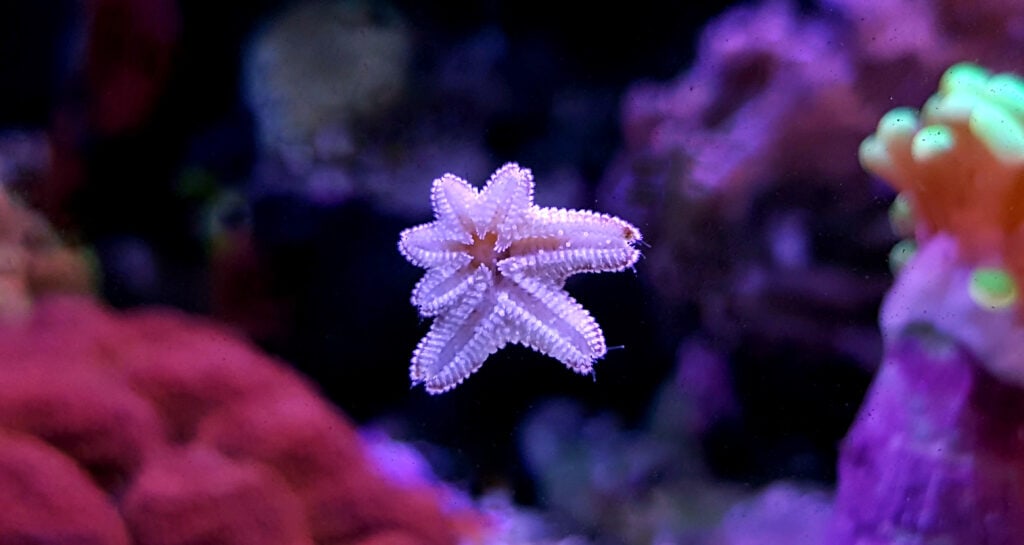There are a few things that any hobbyist dreads finding in their aquarium. Aquarium pests can appear out of nowhere and can spread like a wildfire. Even with all of the preventative measures that are available, at some point we’ve all had one pest sneak into our tank. It happens to all of us and there is no reason to give up on the tank if it happens.
The following list includes just a few of the many pests you can discover in your saltwater tank. Luckily, there are now many different methods of removing any type of pest. Most hobbyists have experienced at least one of these pests and most of us have had success with removing them. It can be a very stressful situation when you first discover a pest. However, it is best to weigh out all of your options and complete research before reacting. The worst thing you can do is overreact and do to much to the tank. Acting on the spot without due research can be more dangerous than the pest itself. Take a step back, weigh your options, come up with a plan and then remove them!
Aiptasia
 This first pest is one of the most common one that you will see appear in a tank. Aiptasia is a pest anemone and can spread rapidly if it isn’t taken care of early on. These small anemones release gametes into the water column to reproduce, creating new colonies wherever they land and settle. It therefore is crucial to remove these anemones properly.
This first pest is one of the most common one that you will see appear in a tank. Aiptasia is a pest anemone and can spread rapidly if it isn’t taken care of early on. These small anemones release gametes into the water column to reproduce, creating new colonies wherever they land and settle. It therefore is crucial to remove these anemones properly.
There are different brands of “pesticide” that you can use to apply directly into the mouth of the aiptasia. All of these brands come with a bottle of the liquid along with a syringe to use in order to accurately injecting it into the anemone. You should turn off all of your pumps when using any form of aiptasia removal to prevent the treatment substance from flying off of the aiptasia and landing on any of your corals. You must completely cover the mouth of the anemone in order to ensure it will die. If you don’t do this, the anemone could survive; worse, because of the stress, it might release more gametes and you will end up with more than you started with!
Peppermint shrimp or aiptasia-eating filefish can help remove any aiptasia as a natural biocontrol.
Asterina
Asterina starfish may look cute and exciting to a new hobbyist discovering it in their tank. However, these tiny dime-size starfish can create chaos in the aquarium. This is because of how fast they can reproduce and it only takes one in your tank to end up with hundreds. The most common means of removal is a harlequin shrimp. Harlequin shrimp only eat starfish, but they eat nearly all starfish (whether they are pets or pests). These beautiful shrimp are known to quickly take care of an infestation of asterinas; however, since these shrimps only eat starfish, once they finish eating all of the starfish in your tank, they either need to be returned to a local fish store or you need to begin purchasing starfish to feed the shrimp.
Unfortunately, the only other method of removal is manually picking each starfish out of the tank by hand. This is tedious and it can be easy to miss one. Thus, most people choose to purchase a harlequin shrimp.
Flatworms
This next pest is every coral keeper’s nightmare. Flatworms can quickly destroy a reef tank if they are not caught quickly. The two main types of flatworms you will find in your aquarium are rust brown flatworms and Acropora-eating flatworms. The most aggressive of the two are the Acropora-eating flatworms as they can quickly eat the flesh off of your coral causing entire colonies to die off.
 Luckily, there’s a treatment method I use that has given me great success. This method is not something I created; it is a combination of methods that I jumbled together for the ultimate success in removal. For this method you need Flatworm Exit, a filter sock, a siphon and lastly, yellow tail damsels. To start the process, you must dose the proper amount of Flatworm Exit and wait 20-30 minutes. This medication kills flatworms almost instantly so it is crucial that you are present to remove all of the dead flatworms quickly.
Luckily, there’s a treatment method I use that has given me great success. This method is not something I created; it is a combination of methods that I jumbled together for the ultimate success in removal. For this method you need Flatworm Exit, a filter sock, a siphon and lastly, yellow tail damsels. To start the process, you must dose the proper amount of Flatworm Exit and wait 20-30 minutes. This medication kills flatworms almost instantly so it is crucial that you are present to remove all of the dead flatworms quickly.
Once you’ve waited and you begin seeing the flatworms die off, tie the filter sock on the end of the siphon. Place that end in the sump so that once you start siphoning, the water will go back into the system and the sock will catch all of the flatworms. Siphon each flatworm you can find. These pests can release toxins when they die so remove as many as possible to prevent a tank crash. Once you believe you’ve removed the majority of the flatworms, take the sock off of the siphon and perform a water change. This removes any toxins that were possibly released into the water.
Now the yellow tail damsels come in to play. Purchase a few of these damsels, (depending on the size of your tank). I have had great success with yellow tail damsels eating flatworms; however, as with any fish known for eating pests, this isn’t a 100% guarantee. However, I find it helpful if I purchase a few which will give me greater odds. Luckily, these damsels are not as aggressive as most damsels and can be a great addition to your tank along with helping you keep flatworms out of your tank.






Peter says
Not sure why you’d consider Asterinas problematic. They appeared, boomed and disappeared from my aquarium all of their own accord. Tiny brittle stars, did the same. So many critters/plagues have spontaneously appeared en masse and then crashed or largely disappeared over the years – bubble algae, tiny snails, glass sponges, encrusting sponges, calcareous and soft tubeworms, tunicates, etc. I could go on. The one constant that never diminishes are bristleworms. I’ve trapped them and I pluck them out when I can and I’ve got a dottyback (that extirpated all the exposed amphipods), but nothing makes a dent. I’ve come to accept that bristleworms are just another not-so-attractive part of the clean up crew ecosystem.
Another Google User says
How do the above solutions work with a seahorse tank, please? Thanks.
Matt Quillin says
I hate these little sandstars I wish my Harlingen shrimp wasn’t the only thing that eats these so well.
Bob Seyfarth says
Depending on what other fish you have in your tank, six line wrasses also like to eat flatworms and other pests.
Corey says
I hate pets. 90% of my tank had been pest free, I have found only 2 aptasia, killed them instantly. Now I know I need to always dip all my coral